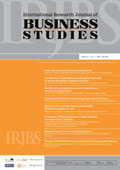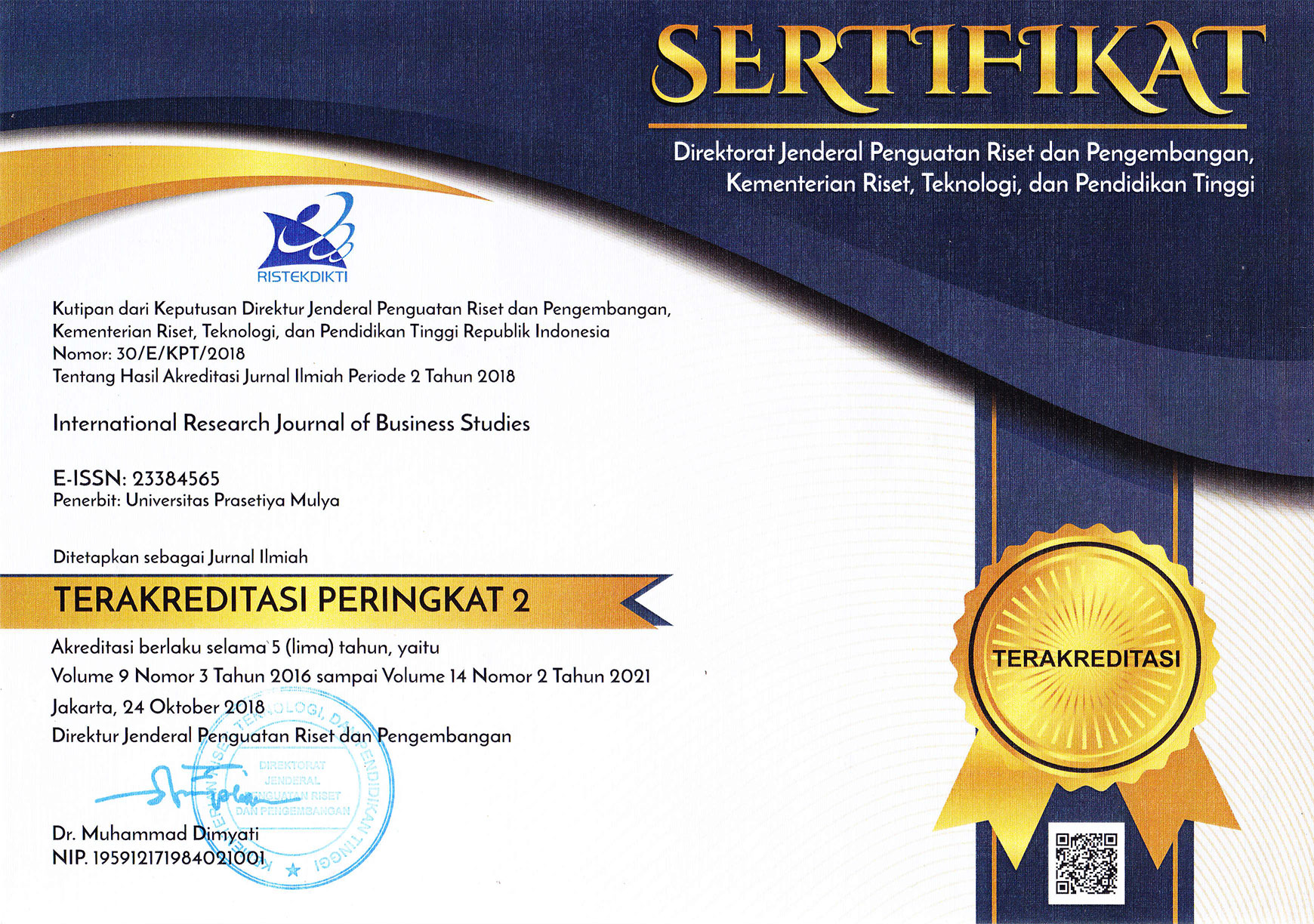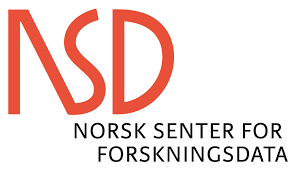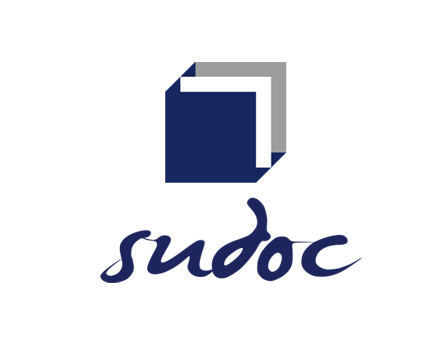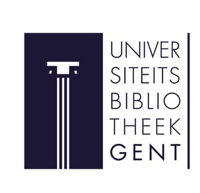Article Metrics |
|
|
The Relationship between Culture and Social Capital with the Sustainability of Microfinance
Abstract
Poverty has been the biggest problem around the world and one of the innovative solutions offered is microfinance. Since the success story of Grameen Bank spread, many countries decided to adopt microfinance programs to alleviate poverty. Microfinance is then believed as an effective instrument that can answer the poverty challenges. Several studies have analysed the impact of microfinance on poverty reduction, but the results varied. Some support that microfinance can improve the poor, but other criticise and argue that microfinance does not play a significant role to reduce poverty rate and even undermine the poor. This article aims to analyse factors, namely culture and social capital, that can influence the sustainability of microfinance performance. The assumption used in this article is that the success of microfinance cannot be separated from the borrowers’ background that influence their behaviours towards microfinance. The article summarised literatures that have discussed this issue using a qualitative approach. The findings show that culture and social capital have an impact on the sustainability of microfinance, but the impacts depend on the condition of cultures and social capital in a society. However, additional supports are needed and should not be ignored to accelerate the impact of microfinance.
Keywords: Culture, Microfinance, Social capital, Sustainability
* Economic Research Center, the Indonesian Institute of Sciences Jl. Jend. Gatot Subroto 11 Jakarta 12710, Indonesia
Full Text:
References
Agbola, F. W., Acupan, A., & Mahmood, A. (2017). Does microfinance reduce poverty? New evidence from Northeastern Mindanao, the Philippines. Journal of Rural Studies, 50, 159–171. https://doi.org/10.1016/j.jrurstud.2016.11.005
Aggarwal, R., Goodell, J. W., & Selleck, L. J. (2015). Lending to women in microfinance: Role of social trust. International Business Review, 24(1), 55–65. https://doi.org/10.1016/j.ibusrev.2014.05.008
Al-Azzam, M., Hill, R. C., & Sarangi, S. (2012). Repayment performance in group lending: Evidence from Jordan. Journal of Development Economics, 97(2), 404–414. https://doi.org/10.1016/j.jdeveco.2011.06.006
Al-Mamun, A., & Mazumder, M. N. H. (2015). Impact of microcredit on income, poverty, and economic vulnerability in Peninsular Malaysia. Development in Practice, 25(3), 333–346. https://doi.org/10.1080/09614524.2015.1019339
Ali, I., Hatta, Z. A., Azman, A., & Islam, S. (2017). Microfinance as a Development and Poverty Alleviation Tool in Rural Bangladesh: A Critical Assessment. Asian Social Work and Policy Review, 11(1), 4–15. https://doi.org/10.1111/aswp.12106
Banász, Z., & Csepregi, A. (2017). Microfinance institutions influenced by national culture: An evidence based on investigating 35 countries. In R.-D. Leon (Ed.), Managerial strategies for business sustainability during turbulent times (1st ed., pp. 185–206). https://doi.org/10.4018/978-1-5225-2716-9.ch010
Banerjee, A., Chandrasekhar, A. G., Duflo, E., & Jackson, M. O. (2013). The diffusion of microfinance. Science, 341(6144). https://doi.org/10.1126/science.1236498
Banerjee, A., Duflo, E., Glennerster, R., & Kinnan, C. G. (2015). The Miracle of Microfinance? Evidence from a Randomized Evaluation. American Economic Journal: Applied Economics, 7(1), 22–53. https://doi.org/10.1257/app.20130533
Banerjee, S. B., & Jackson, L. (2017). Microfinance and the business of poverty reduction: Critical perspectives from rural Bangladesh. Human Relations, 70(1), 63–91. https://doi.org/10.1177/0018726716640865
Bastelaer, T. V. A. N., & Leathers, H. (2006). Trust in lending: social capital and joint liability seed loans in Southern Zambia. World Development, 34(10), 1788–1807. https://doi.org/10.1016/j.worlddev.2006.02.007
Berggren, O., & Burzynska, K. (2014). The impact of social beliefs on microfinance performance (No. 5). Retrieved from https://lusem.lu.se/media/kwc/working-papers/2014/kwc-wp-2014-5.pdf
Burt, R. S. (1992). Structural holes: The social structure of competition. USA: Harvard University Press.
Cassar, A., Crowley, L., & Wydick, B. (2007). The effect of social capital on group loan repayment: Evidence from field experiments. The Economic Journal, 117(517), 85–107. https://doi.org/10.1111/j.1468-0297.2007.02016.x
Chowdhury, A. (2009). Microfinance as a poverty reduction tool — A critical assessment. In DESA Working Paper No. 89 (No. 89).
Churchill, S. A., & Nuhu, A. S. (2016). What has failed: microfinance or evaluation methods ? Journal of Sustainable Finance & Investment, 6(2), 85–94. https://doi.org/10.1080/20430795.2016.1176424
Coleman, J. S. (1988). Social capital in the creation of human capital. American Journal of Sociology, 94, 95–120. Retrieved from https://www.jstor.org/stable/2780243
Comim, F. (2007). Poverty reduction through microfinance: A capability perspective. In B. Balkenhol (Ed.), Microfinance and public policy: Outreach, performance and efficiency (1st ed., pp. 47–59). https://doi.org/10.1080/09645290902907228
de Quidt, J., Fetzer, T., & Ghatak, M. (2016). Group lending without joint liability. Journal of Development Economics, 121(July), 217–236. https://doi.org/10.1016/j.jdeveco.2014.11.006
Doan, T., Gibson, J., & Holmes, M. (2014). Impact of household credit on education and healthcare spending by the poor in peri-urban areas, Vietnam. Journal of Southeast Asian Economies, 31(1), 87–103. https://doi.org/10.1355/ae31-lf
Fogel, K., Lee, K., & McCumber, W. (2011). Institutional impact on the outreach and profitability of microfinance organizations. In D. B. Audretsch, O. Falck, S. Heblich, & A. Lederer (Eds.), Handbook of research on innovation and entrepreneurship. https://doi.org/10.4337/9781849807760.00013
Grootaert, C., Narayan, D., Jones, V. N., & Woolcock, M. (2004). Measuring social capital (No. 18).
Hickel, J. (2015, June 10). The microfinance delusion: who really wins? Retrieved February 15, 2019, from The Guardian website: https://www.theguardian.com/global-development-professionals-network/2015/jun/10/the-microfinance-delusion-who-really-wins
Hofstede, G. (2001). Culture’s consequences: Comparing values, behaviors, institutions and organizations across nations. California, USA: Sage Publication.
Hulme, D., & Mosley, P. (1996). Finance against poverty: Volume 1. London: Routledge.
Karlan, D. S. (2007). Social connections and group banking. The Economic Journal, 117(517), F52–F84. https://doi.org/10.1111/j.1468-0297.2007.02015.x
Kenneth, N. (1997). Social capital and democracy. The American Behavioral Scientist, 40(5), 575–586. https://doi.org/10.1177/0002764297040005004
Khavul, S. (2010). Microfinance: Creating opportunities for the poor. Academy of Management Perspective, 24(3), 58–72. Retrieved from http://www.jstor.org/stable/29764974
Kittilaksanawong, W., & Zhao, H. (2018). Does lending to women lower sustainability of microfinance institutions? Moderating role of national cultures. Gender in Management: An International Journal, 33(3), 187–202. https://doi.org/10.1108/GM-11-2015-0098
Knewtson, H., & Qi, H. (2019). Managing risk for sustainable microfinance. Journal of Risk Finance, 20(1), 2–13. https://doi.org/10.1108/JRF-05-2018-0075
Kodongo, O., & Kendi, L. G. (2013). Individual lending versus group lending: An evaluation with Kenya ’ s microfinance data. Journal of Advanced Research, 3(2), 99–108. https://doi.org/10.1016/j.rdf.2013.05.001
Levinson, J. D., & Peng, K. (2007). Valuing cultural differences in behavioral economics. The ICFAI Journal of Behavioral Finance, IV(1), 32–47. Retrieved from https://ssrn.com/abstract=899688
Lin, N. (2001). Social capital: A theory of social structure and action (1st ed.). Cambridge, UK: Cambridge University Press.
Lopatta, K., & Tchikov, M. (2016). Do microfinance institutions fulfil their promise? Evidence from cross-country data. Applied Economics, 48(18), 1655–1677. https://doi.org/10.1080/00036846.2015.1105924
Mahajan, V. (2005). From microcredit to livelihood finance. Economic & Political Weekly, 40(41), 4416–4419. Retrieved from https://www.jstor.org/stable/4417256
Manos, R., & Tsytrinbaum, L. (2014). Determinants of performance in the microfinance industry: The role of culture. In R. Mesrland & R. O. Strom (Eds.), Microfinance institutions: Financial and social performance (pp. 53–78). Lonodn, the UK: Palgrave Macmillan.
Mason, D. R. (2011). Cooperation as collateral? Social capital and joint liability microfinance group lending in Nicaragua. University of California.
Ostrom, E., & Ahn, T. K. (2009). The meaning of social capital and its link to collective action. In G. T. Svendsen & G. L. H. Svendsen (Eds.), Handbook of social capital: The troika of sociology, political science and economics (pp. 17–35). Chelthenham, UK: Edward Elgar.
Postelnicu, L., & Hermes, N. (2018). Microfinance Performance and Social Capital: A Cross-Country Analysis. Journal of Business Ethics, 153(2), 427–445. https://doi.org/10.1007/s10551-016-3326-0
Putnam, R. D. (1993). Making democracy work: Civil traditions in modern Italy. Princeton, New Jersey: Princeton University Press.
Quach, H. M. (2017). Does access to credit improve household welfare in the long-run? The Journal of Developing Areas, 51(1), 129–142. https://doi.org/10.1353/jda.2017.0007
Rokhim, R., Sikatan, G. A. S., Lubis, A. W., & Setyawan, M. I. (2015). Does microcredit improve wellbeing? Evidence from Indonesia. Humanomics, 32(3), 354-258–274. https://doi.org/10.1108/H-04-2016-0037
Rooyen, C. V., Stewart, R., & Wet, T. D. (2012). The Impact of microfinance in Sub-Saharan Africa: A systematic review of the evidence. World Development, 40(11), 2249–2262. https://doi.org/10.1016/j.worlddev.2012.03.012
Scanlon, C., Scanlon, K., & Scanlon, T. (2017). The Influence of collectivism on microfinance in Senegal. Comparative Advantage, 5(1), 56–65. Retrieved from https://stanfordcomparativeadvantage.files.wordpress.com/2017/07/scanlon-collectivism-microfinance.pdf
World Bank. (2018, September 19). Decline of global extreme poverty continues but has slowed: World Bank. Retrieved February 15, 2019, from https://www.worldbank.org/en/news/press-release/2018/09/19/decline-of-global-extreme-poverty-continues-but-has-slowed-world-bank
Yunus, M., & Jolis, A. (2007). Banker to the poor: Micro-lending and the battle against world poverty. New York, USA: PublicAffairs.
Zhang, Q. (2017). Does microfinance reduce poverty ? Some international evidence. The B.E. Journal of Macroeconomics, 17(2), 1–13. https://doi.org/10.1515/bejm-2016-0011
Copyright (c) 2020 INTERNATIONAL RESEARCH JOURNAL OF BUSINESS STUDIES
International Research Journal of Business Studies has been covered by the following services: | ||||||||||||||||||||||||
|

